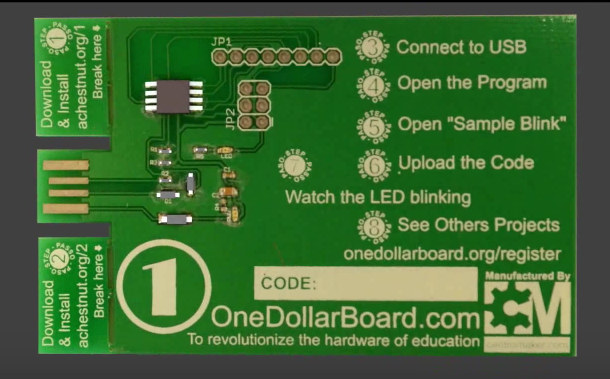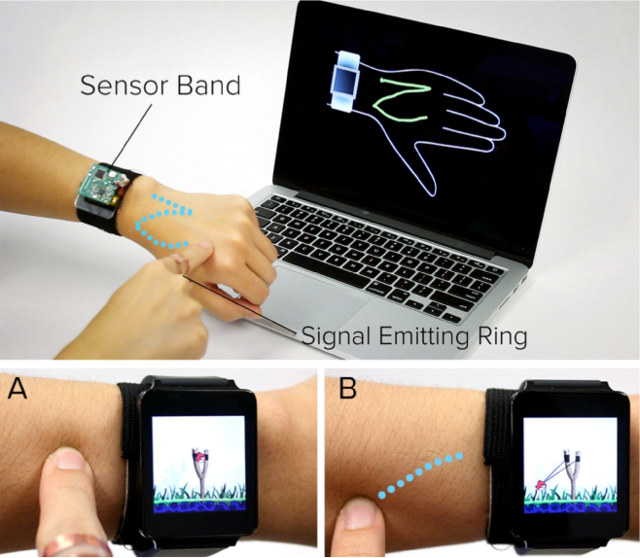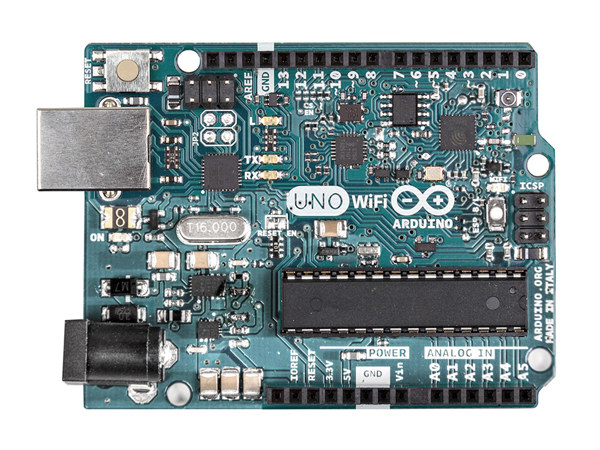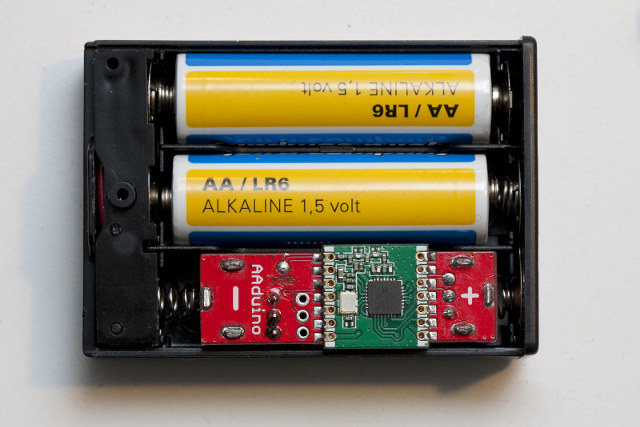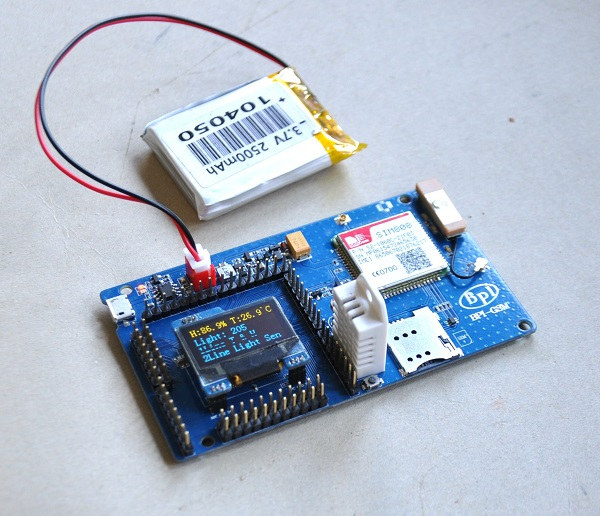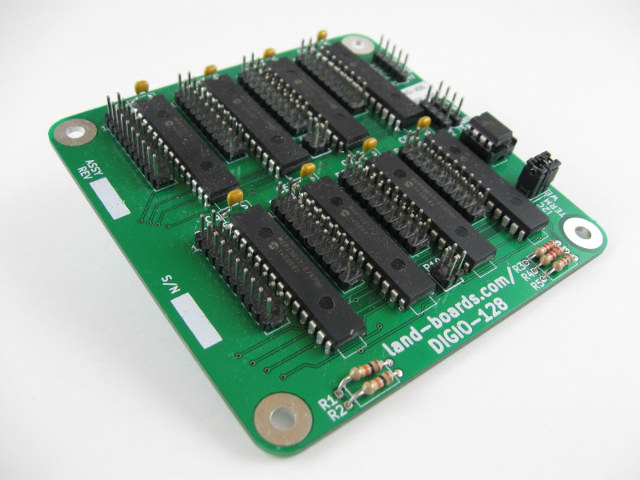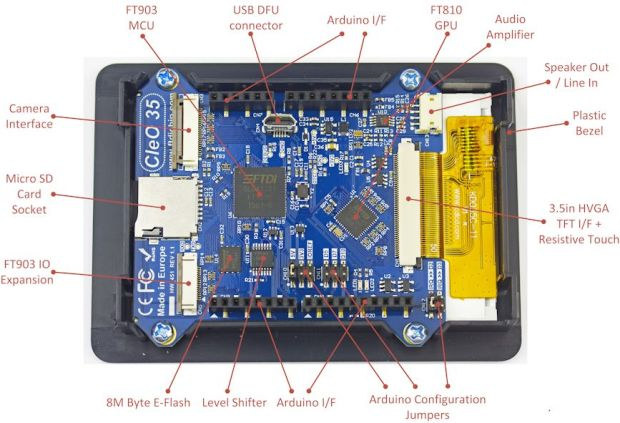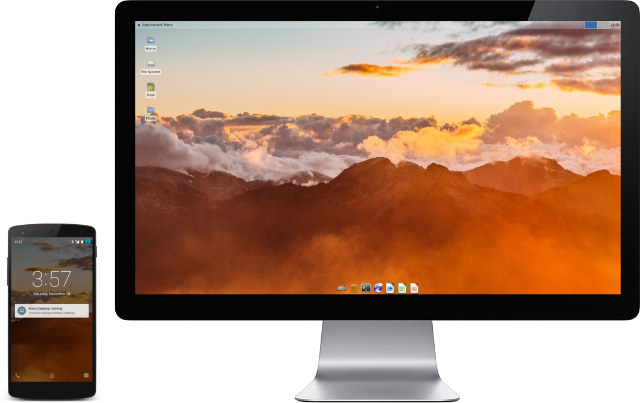I’ve already tried a one dollar board based on STM8s in the past, but it required a separate STLink debugger, installing a toolchain, and a few other steps. The “One Dollar Board” project, born in Brazil, has different objectives, as it aims to provide an easy way for pupils around the world to getting started with electronics, by simply connecting it to the USB port of a computer or board capable of running the Arduino IDE, and following the instructions printed on the board. One Dollar Board specifications: MCU – 8-bit MCU (likely Atmel AVR) with 8 KB flash 6x GPIO (input and output ports) USB – 1x USB port for power and programming Misc – 2x LEDs, reset button Expansion – Spaces for Wifi ESP8266, Atmel 24C256 serial EEPROM (256 KB), and L293 Driver motor (unclear where though) Power Supply – 5V via USB Dimensions – Compatible with Arduino […]
SkinTrack Controls Your Smartwatch with Gestures on Your Skin or Clothes
A group of researchers of the Future Interface Group, Carnegie Mellon University in the US, has worked on SkinTrack technology which enables continuous touch tracking on the skin by using a ring emitting high frequency AC signal, and a sensing wristband with multiple electrodes. They’ve created sensor band and ring prototypes to demonstrate the technology. The ring includes an oscillator that generated a 80Mhz sine wave at 1.2Vpp. It consumes 7mA during operating meaning that they could get 15 hours out of the 100 mAh battery used in the prototype. The wristband features four pair of electrodes coupled with AD8302 RF/IF gain and phase comparator chips in order to derive X and Y coordinates from the phase of the signal. The sensing board produces eight analog values which are sampled by Atmel ATMega328 microcontroller’s 10-bit ADC inputs, and transmitted to the watch using a Nordic NRF8001 Bluetooth Low Energy (BLE) […]
Arduino UNO WiFi Board Combines Atmel ATmega328P MCU with ESP8266 SoC
Arduino.org (Arduino Srl) has launched Arduino UNO WiFi board, bringing Arduino (Atmel ATMega328P MCU) and ESP8266 together, and adding WiFi to the popular Arduino UNO board, while keeping all existing interfaces and headers. Arduino UNO WiFi (A000133) board specifications: Arduino part MCU – Atmel ATmega328 8-bit AVR MCU @ 16 MHz with 32 KB flash Memory, 2KB SRAM, 1KB EEPROM Digital I/O pins – 14, with 6 PWM and UART Analog Input Pins – 6 DC Current per I/0 – 40 mA Misc – Reset button Operating Voltage – 5 V ESP8266 part SoC – Expressif ESP8266EX Tensilica Xtensa LX106 processor @ 80 MHz Storage – 4MB SPI flash Connectivity – 802.11 b/g/n WiFi @ 2.4 GHz, wake up time < 2 ms; Antenna: PCB and IPX Misc – Bootloader button, WiFi LED Operating Voltage – 3.3 V Common specs USB – 1x USB device port Input Voltage – 5-12 […]
AAduino Arduino Compatible Board Fits Neatly into an AA Battery Holder
Johan Kanflo has been using Arduino compatible boards based on Tiny328 MCU with an ISM radio module (wireless Arduino clone), but he found that finding a case was not easy, and was quite not ready to to design its own and print it with a 3D printer. So instead he shrank the board to fit into an AA battery case bought on Ebay with two AA batteries taking the remaining slots. That’s the result. AAduino board specifications: MCU – Atmel ATMega328p clocked at 8 MHz to save power Radio – RFM69C ISM transceiver module Sensors – Two DS18B20 temperature sensors Misc – Indicator LED Keystone battery terminals rotated 180° to act as positive and negative terminals. Power – 2x AA batteries The project is also open source hardware, with all hardware files released under the MIT license on Github, where you’ll also find a demo sketch for the board. Via […]
BPI-GSM Arduino Compatible Board Integrates a GSM & GPS Module, Sensors and an OLED Display
Banana Pi team has come up with another board, but this time it does not run Linux or Android, as they’ve made an Arduino compatible board called BPI-GSM based on Atmel ATmega2560 MCU with a light sensor, DHT22 temperature and humidity sensor, and a GSM/GRPS & GPS module powered by a LiPo battery. BPI-GSM board specifications: MCU – Atmel ATmega2560 8-bit AVR MCU @ 16 MHz with 256 KB flash, 8KB SRAM, 4KB EEPROM Connectivity – Simcom SIM808 GSM, GPRS, and GPS module + SIM card slot + Sensors – DHT22 temperature and humidity sensor, light sensor Display – OLED display Expansion headers – 54x digital I/O (including 14x PWM), 16x analog input, 4x UART. Max DC current per I/O: 40 mA. Misc – Reset button, LEDs Power Supply 5V via micro USB port 3.7V LiPo battery (2,500 mAh battery included in kit) Dimensions – TBD The board can be […]
DIGIO-128 Board Adds 128 GPIOs to Your Development Board
If you run out of GPIOs on your board, the easy way is to add an I2C GPIO expander, but those are normally limited to 8 or 16-channels, so Land Boards decided to create a board with 8 IO expanders making it a 128 channel IO expander that works on Raspberry Pi, BeagleBone Black, Arduino, and basically any boards with an I2C hardware or software implementation. DIGIO-128 board specifications: 8x Microchip MCP23017 16-bit I/O expander for up to 128 GPIOs Communication Interface – I2C host interface with 100/400 KHZ operation; 4-pin host interface connector (Ground, Power, Clock, Data) 8x 20-pin 2.54mm pitch connectors with 16 I/Os, 2x VCC, and 2 ground 2x 4-pin interrupt connectors Data Storage – Microchip 24LC024 2K EEPROM with board info. 3.3V or 5V operation Dimensions – 95 x 95 mm You can find out to use the board in the Wiki for code for Raspberry […]
Cleo35 Touchscreen Display for Arduino UNO Comes with Tutorials and Example Projects (Crowdfunding)
There are already various options to add a (touscheen) display to Arduino board with software support including TFTLibrary for Arduino, and recently I tried Nextion serial touchscreen displays that are supported by a WYSIWYG editor, but the latter is only supported in Windows and not exactly user-friendly, and I found the few provided tutorials would only work with a specific resolution incompatible with the displays I had been sent. So I gave up on the idea of interfacing the display with Arduino or ESP8266 as it would be too time-consuming. FTDI CleO project might be faster and easier to get started, as their CleO35 touchscreen display for Arduino UNO will come with a 20 chapter tutorial covering over 80 topics, and 20 projects to get started. Some of the key features and specs of Cleo35 display include: MCU – FTDI FT903 32-bit FT32 core @ 100MHz with 256kB on-chip Flash […]
Open Source Operating Systems News – Maru OS, Zephyr, ReactOS, Tizen 3.0, and Raspbian
There have been several news related to open source operating systems in the last couple of weeks including Maru OS to run Debian on Android, Zephyr Project real-time OS managed by the Linux Foundation, ReactOS an open source port of Windows XP, and Raspberry Pi boards are getting a Tizen 3.0 port, as well as a new Raspbian release. Maru OS – Mobile <-> Desktop Convergence Maru OS mobile operating system is supposed to do what Ubuntu convergence promised: it runs in mobile mode on the go with Android Lollipop mobile OS, once you connect the phone to an HDMI screen, and pair Bluetooth keyboard and/or mouse, it will switch to desktop mode running Debian Linux. The downside is that so far it a single developer (Preetam D’Souza) worked on it, and the beta version only works on Nexus 5 smartphone. However, since the project went viral, dozen of other […]


